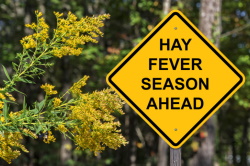Introduction
In emergency circumstances, understanding how to perform mouth-to-mouth resuscitation can be a lifesaver. Cardiopulmonary resuscitation (MOUTH-TO-MOUTH RESUSCITATION) is a technique used to restore somebody who has actually experienced heart attack or quit breathing. By offering breast compressions and rescue breaths, mouth-to-mouth resuscitation assists to maintain blood flow and oxygenation until specialist medical assistance arrives. In this thorough overview, we will walk you with the step-by-step process of doing CPR, making certain that you have the knowledge and skills necessary to respond effectively in an emergency situation.
Understanding the Essentials of CPR: A Step-by-Step Tutorial
Performing mouth-to-mouth resuscitation requires a combination of breast compressions and rescue breaths. The objective is to distribute oxygenated blood throughout the body, maintaining essential body organs working until physician can take over. Let's dive into each step in information:
Step 1: Evaluate the Situation
Before initiating CPR, it is vital to assess the circumstance for any kind of prospective risks. Make sure that both you and the sufferer are risk-free from any hazards that might create harm during the resuscitation process.
Step 2: Look for Responsiveness
Gently touch the sufferer's shoulder and shout, "Are you okay?" If there is no reaction, continue to the following step.
Step 3: Call for Help
Immediately call emergency situation services or ask a person nearby to do so. Time is important in a heart attack situation, and specialist medical help needs to look out as soon as possible.
Step 4: Open the Airway
Tilt the victim's head back somewhat and raise their chin to open their airway. This assists make sure that oxygen can move easily right into their lungs.
Step 5: Check for Breathing
Look for indicators of normal breathing such as chest fluctuate or paying attention for breath noises. If there are no signs of breathing or only gasping sounds, the target is not taking a breath effectively.
Step 6: Begin Upper Body Compressions
Place the https://beaurusf169.yousher.com/life-saving-skills-within-your-reaches-with-cpr-training-in-southport heel of one hand on the center of the sufferer's upper body, between the nipples. Interlace your fingers and position yourself straight over their upper body. With your arms directly and shoulders straight over your hands, start compressions. Push hard and fast, aiming for a First Aid Courses in Gold Coast deepness of at least two inches and a rate of 100-120 compressions per minute.
Step 7: Provide Rescue Breaths
After 30 compressions, provide 2 rescue breaths. Preserve an open air passage by turning the target's head back and lifting their chin. Squeeze their nose closed, create a seal over their mouth with your own, and provide two complete breaths lasting regarding one second each. Watch for noticeable breast rise with each breath.
Step 8: Continue Mouth-to-mouth Resuscitation Cycles
Resume upper body compressions quickly after giving rescue breaths. Repeat cycles of 30 compressions followed by 2 rescue breaths up until professional aid gets here or the target shows indicators of life.
FAQs regarding CPR
Q: What is the objective of CPR? A: The purpose of CPR is to maintain blood circulation and oxygenation in a person who has experienced cardiac arrest or quit breathing till professional clinical help arrives.
Q: Just how do I recognize if someone needs CPR? A: If an individual is unresponsive, not breathing generally, or wheezing for breath, they might call for CPR.

Q: Can I execute mouth-to-mouth resuscitation on myself? A: No, CPR needs to just be performed on somebody else that requires prompt medical attention.
Q: Is it needed to perform rescue breaths throughout CPR? A: Rescue breaths are a vital part of CPR as they offer oxygen to the lungs and raise opportunities of survival.
Q: Do I need to be certified to execute CPR? A: While accreditation is not needed to perform mouth-to-mouth resuscitation, it is very suggested to undergo an emergency treatment program that includes mouth-to-mouth resuscitation training. Proper training equips you with the necessary skills and understanding to react effectively in emergency situation situations.
Q: Can I create harm by doing CPR incorrectly? A: While it is always best to receive appropriate training, performing mouth-to-mouth resuscitation, also if refrained perfectly, enhances the possibilities of survival for somebody experiencing cardiac arrest. Any attempt at CPR is far better than no effort at all.

Conclusion
Understanding the essentials of CPR is a crucial ability that can assist in saving lives in emergency situation scenarios. By complying with the step-by-step tutorial detailed in this article, you can confidently react to cardiac arrest or breathing emergencies and give prompt care until professional clinical assistance arrives. Bear in mind, going through a first aid program that consists of mouth-to-mouth resuscitation CPR Training reviews Gold Coast training is extremely recommended for extensive expertise and hands-on technique. Be prepared and prepare to make a distinction when it matters most.